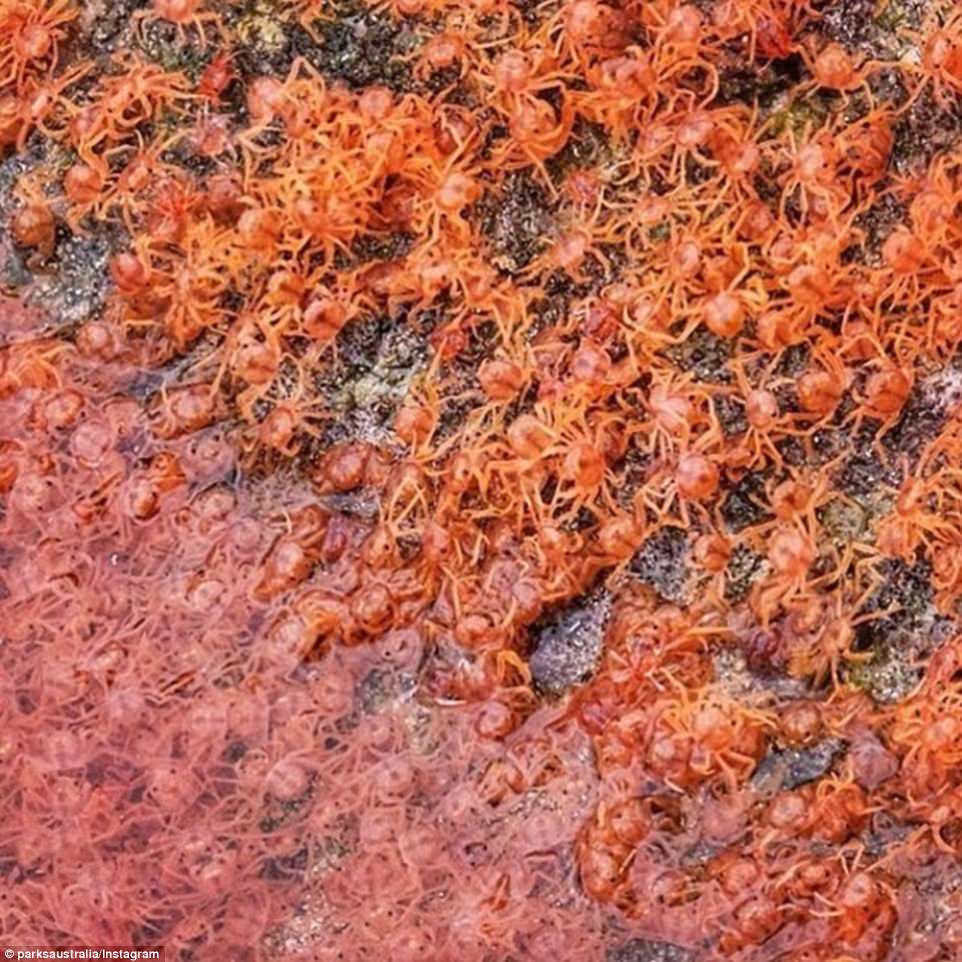Millions of red crabs have shut down beaches and closed roads across Christmas Island as they make their way back to the jungle after mating season.
A crimson tide of the near-threatened crustaceans is so thick it can be seen from Google Earth and looks like a river of blood slowly moving across the remote island in the Indian Ocean.
The migration begins at the start of the wet season in October or November when adult crabs leave their burrows in the dense jungle and walk to the beach, dipping in the ocean to replenish body salts.
Male crabs dig burrows in the sand which they defend from other crabs while they try to mate with the females, then migrate back home while the females stay with their eggs.
After 2-3 weeks, the female crabs put their eggs into the ocean and start their own return journey while the eggs hatch into the water as larvae.
Some years very few or none of the baby crabs will emerge alive from the ocean about four weeks later, but this week millions of tiny crabs made it and swarmed onto the beaches.
The tiny creatures turned beaches red before slowly progressing across the island, crossing roads and meandering around houses until they link up with the adults.
Four years later the crabs are ready to make their own migration to the beach to mate and begin the lifecycle all over again.
All phases of the migration are popular tourist attractions with visitors timing their travel to coincide with it to see the unique sight, as the crabs only live on Christmas Island.


























